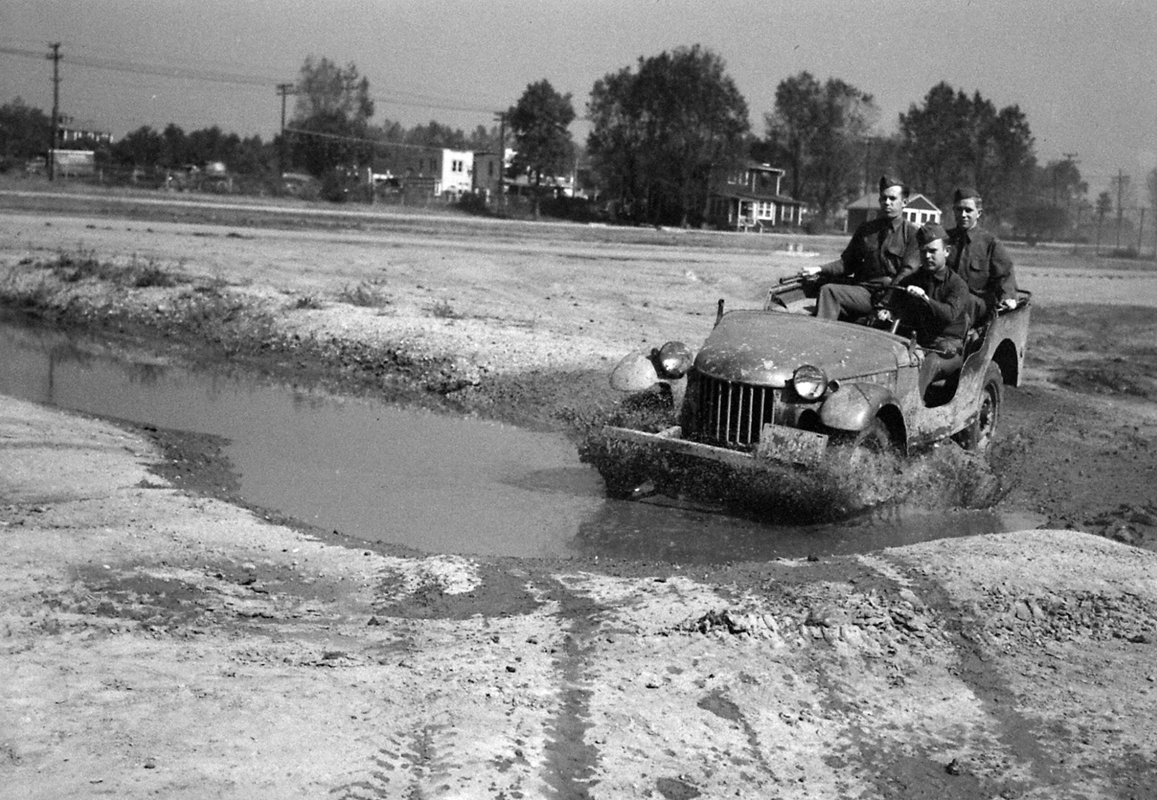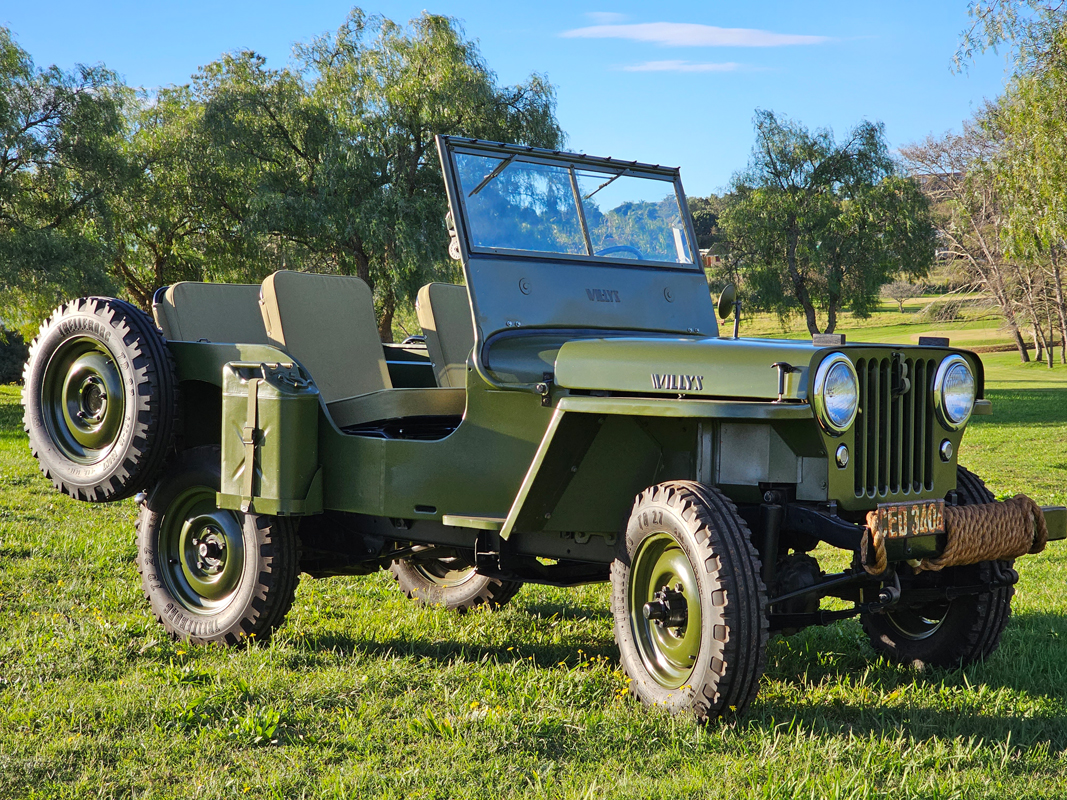
Many people consider the 1948 Land Rover as the first of the modern breed of 4×4 utility vehicles (‘sport’ had, at that time, no place in what was a purely practical mode of transport) but, in actual fact, without the now-iconic Willys Jeep of wartime fame, it is entirely possible that the Land Rover wouldn’t have ever existed.
The Willys Jeep became arguably the most important wartime vehicle almost the moment production started in the middle of World War II, becoming indispensable for every branch of the military and seeing service in almost every theatre of war.
One South African fan spent his entire life yearning to have his own Willys. Vincent Koekemoer loves the vehicle so much that his wife almost divorced him when she had to count out the money in cash for his second one.
It cost him R21 000 and it was lying in bits on a farm in Patensie in South Africa’s Eastern Cape province. The Kariega (Uitenhage)-based building surveyor had managed to find his first Willys in Cape Town, fulfilling a desire that burned within him for more than 40 years ever since he’d first fallen in love with the idea of owning one.
“When I was growing up, I used to go to auctions all over the Eastern Cape,” he remembers. “The military were selling their old Willys. I couldn’t afford them but, as it was, no one would even give me a chance to bid.”
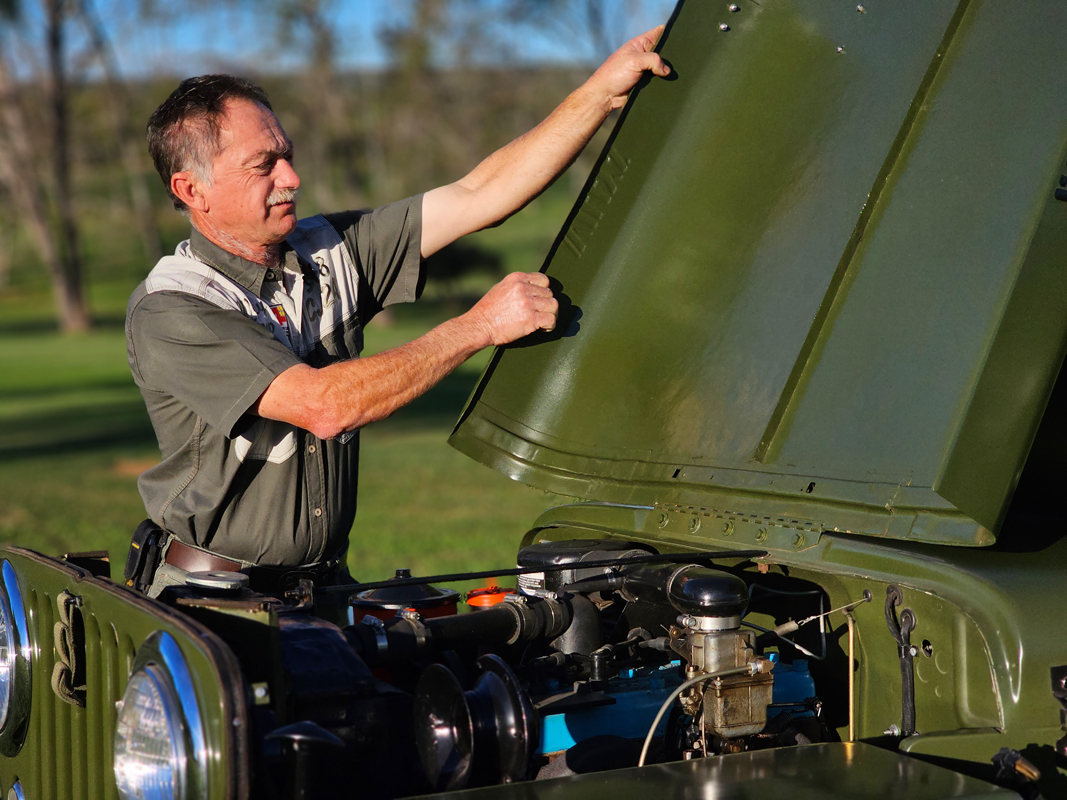
Eventually, Koekemoer just gave up, matriculated from Muir College, went off to what was then PE Tech, got conscripted and then went to work in construction. The bug had bitten deep though. He started looking again, this time in the Eastern Cape’s Weekend Post, scouring the classifieds motoring swop column. Each time he found a Willys he would be disappointed. They would have been gutted or modified, rebuilt in fibreglass and the original engines replaced by others. Eventually, he stopped looking.
One evening, about five years ago, he and a friend got chatting over a drink. The conversation got round to cars, specifically Willys. This time Koekemoer didn’t go to the newspapers, he started scouring the internet on sites like Gumtree and OLX. There was a hit in Cape Town, so he got his brother and sister-in-law to look. He bought the Willys, but it was in bad condition, with the wrong engine. It had been modified. Then came the Willys in Patensie. It was in bits, but the parts were original.
Three years and about R60 000 later, his first restoration was finished. Every part was original. He had loosened, cleaned, greased and tightened every nut and bolt. If he couldn’t get the parts sent to him from America, he’d make them himself. “I grew up on a farm, I’m very hands-on, I do metal work, woodwork, you name it,” he said.
He started taking his restored Willys to local fairs, starting with the George Old Car Show hosted by the Southern Cape Old Car Club. In February, on his third trip to George, someone offered him R900 000 for it. He has no intention of selling, yet. Instead, he’s now picked up another two Willys, after a farmer from nearby Kirkwood phoned him to tell him he had two wrecks on his farm and asked if he could restore one of them. “I said ‘yes’ on condition I could restore the second one and keep that one,” he says.

Koekemoer’s fame has spread far and wide; he’s met Willys lovers from as far as Swakopmund in Namibia, Colesberg in the Northern Cape, Cape Town and Plettenberg Bay. “The best part of owning a Willys,” he says, “is the friends you meet.”
Restoring it is one thing, Koekemoer is also a buff on the vehicle’s history. “These Willys are the civilian models,” he says. “My first one, the green one is a 1947 model and my second is a 1953. The first Willys were built in 1941. There were three companies that tendered: Bantam, Willys Overland and Ford. Bantam won the tender but it was too big so Ford and Willys built them for the US Military. Ford insisted all the bolts had the letter F on them.”
By the end of World War II, between them, Willys and Ford would have built half a million of these vehicles. “After the war, Willys continued making the vehicles for the civilian market, the chassis and the body remained the same, but the lights were different and they added a tailgate, as well as a PTO (Power Take Off) to allow farmers to pull ploughs and run farming implements.”
Their vehicles carry the name Willys and the Jeep brand – a name that lives on today and continues despite the sale of Willys Overland to Henry J Kaiser and from there to American Motors Corporation (AMC). AMC was acquired by Chrysler, which itself ultimately would become part of Stellantis following the amalgamation between Fiat Chrysler Automobiles and Peugeot (PSA), three years ago.
“The Jeep brand is a very important part of the Stellantis offering,” says Jeep head of brand Janus van Rensburg. “We are incredibly proud of the marque’s DNA. The Jeep brand has evolved from an essential mode of transportation in a time of war to a complete line-up of SUVs delivering legendary off-road capability with luxury interiors and advanced technology.
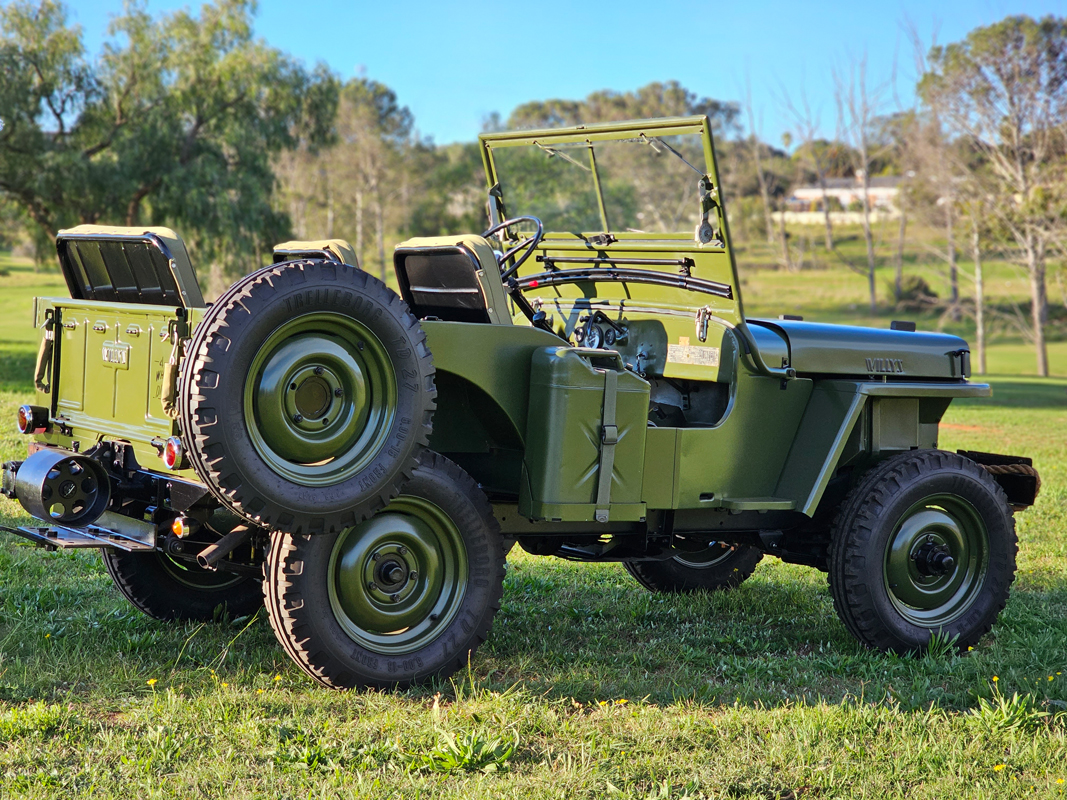
“The Jeep brand today is a passport to an aspirational lifestyle of freedom and adventure that creates the same level of passion and enthusiasm in today’s Jeep vehicle owners as the Willys does for Vincent. We are in awe of what he has achieved, translating his passion into an incredible living testimony to our brand’s heritage – a great example of how our customers create their Jeep experiences; we just make the cars.”
The birth of an icon – Jeep Wrangler; A Brief History
“Necessity is the mother of invention” as the famous Proverb goes, is especially true during wartime. The First World War, or simply ‘the Great War’ of 1914-1918, saw the first hint of new mobility during the war. Horses were no longer the primary source of troop mobility. Motorised transport was making its mark on how wars were to be waged in the future. The Second World War would be characterised by ‘Blitzkrieg’, lightning strikes by highly mobile troops. Germany prepared for years before the war for what they knew was coming. The Allies on the other hand were caught with their pants down.
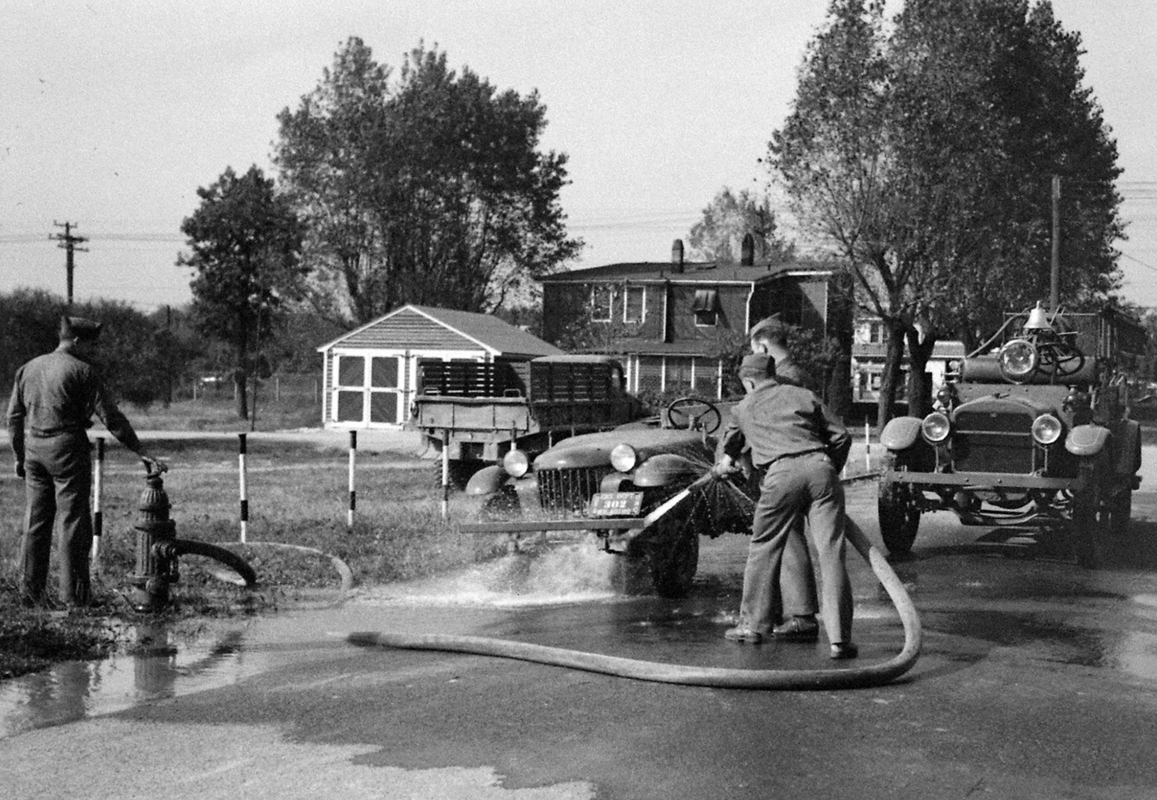
The USA realised that they could be drawn into the conflict so despite only declaring war in December 1941 they were supplying weaponry and assisting the Allied war effort from September 1940. The American President, Franklin D Roosevelt, introduced a Lend-Lease system, whereby goods were supplied by the US ‘on loan’, for payment later. The American military identified the need for a lightweight, off-road capable utility vehicle like the German Armies 50,000 VW ‘Kubelwagen’, a lightweight reconnaissance vehicle.
Up until this point, the Allies were modifying civilian vehicles which were not designed for the stresses and strains of wartime applications. The American Quartermaster General put out a tender for the development of a vehicle that would meet the demands of modern warfare. Within 49 days the companies responding would have to produce a prototype, and within 70 days 70 vehicles in total, for evaluation. This was a tall order for a vehicle that would have to be built from scratch. American Bantam, Willys-Overland and Ford were the three companies that responded.
American Bantam Co of Butler Pennsylvania bought the bankrupt American Austin for the princely sum of 5000 Dollars. Being virtually the only manufacturer of small vehicles in America, it gave them a distinct advantage. Unsurprisingly they were the only ones able to meet the deadline, albeit with a mere 30 minutes to cut off! The military powers that be were dubious of American Bantam’s ability to supply vehicles in large enough numbers so, in what I think was a really dodgy move, invited Willys and Ford engineers to the evaluation of the Bantam Reconnaissance Car or BRC as the prototype was called. Ultimately, they were all granted the right to build vehicles, with the army handing the original Bantam blueprints to Willys and Ford without any compensation to Bantam.
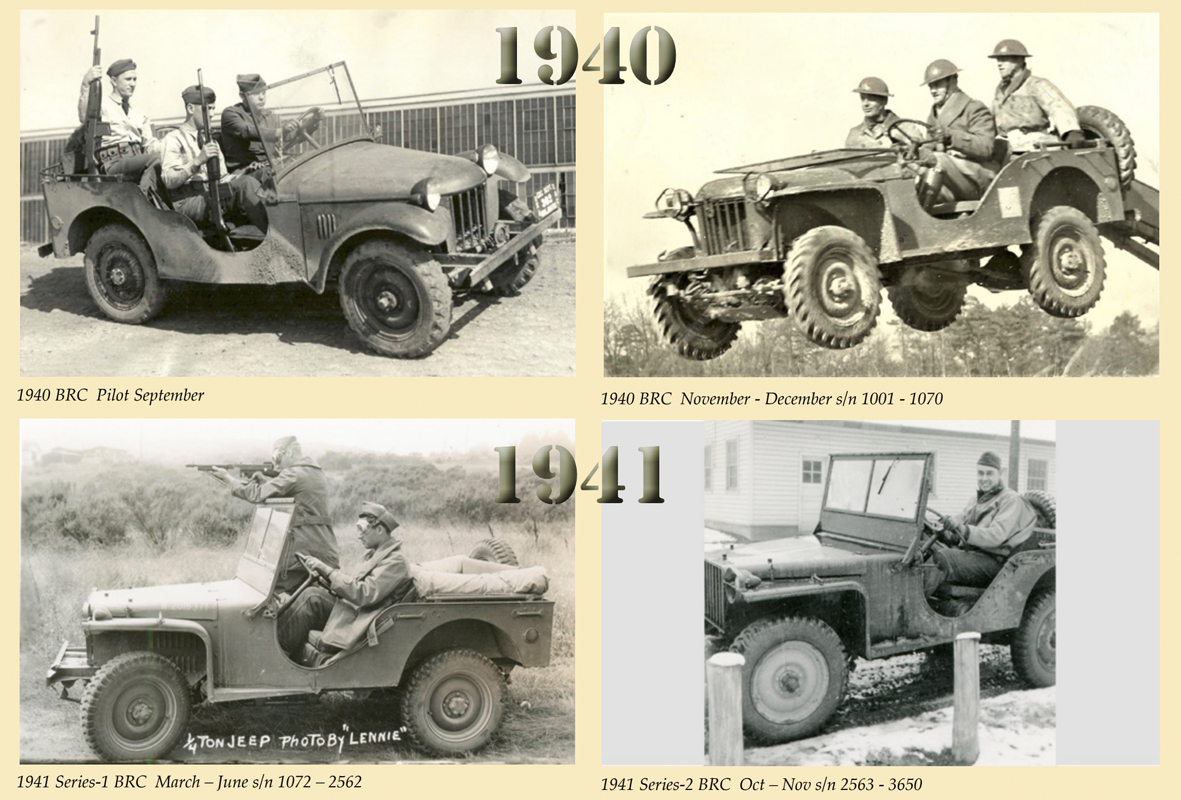
The Willys offering became a firm favourite with the troops as the motor developed 50% more power than the competition. The Bantam offering had superior ride quality and handling, with the Ford being the most robust. Its tractor-derived motor, albeit with a ‘hotter’ cam and bigger carb was a bit of a dog. The first 1500 vehicles built were all sent to the UK and USSR as part of the ‘Lend-Lease’ plan. The Ford vehicles were code-named GP, with the ‘G’ being for Government and the ‘P’ relating to the Ford code for an 80-inch wheelbase vehicle. The US troops’ first batch of vehicles were Ford built and soldiers being what soldiers are probably got referred to as the ‘GP’, which morphed into “Jeep” over time.
There are a few other opinions as to what the name is about but, be that as it may, this new military vehicle got the popular moniker “Jeep” and it was the grandfather of the now-legendary Jeep brand, one of the 14 brands currently marketed globally by Stellantis. Over time the US military standardised the specifications of the vehicles so that there was uniformity of parts, facilitating maintenance and repairs. The Willys’ ‘Go Devil’ engine became the engine of choice. Ford spent 4 million USD tooling up to build the Willys motors under licence. These vehicles had a ‘W’ added to their code, hence GPW.
Over the course of the war over 620,000 Jeeps were built. 363,000 by Willys and 280,000 by Ford. Bantam, the major force behind the design of the Jeep built a handful of vehicles before putting their efforts into building trailers for the Jeeps. Willys-Overland, probably seeing long-term marketing potential for this unique and iconic vehicle were quick to dub it the Willys-Jeep. The insinuation that Willys had designed and built the Jeep did not go unnoticed by the Federal Trade Commission who ruled against Willys in favour of Bantam. A second attempt by Willys to claim ‘ownership’ also failed in favour of Bantam. Post WWII, Willys started marketing the CJ-2A (for ‘Civilian Jeep’), the first of a range of CJ models which firmly established the reputation for unsurpassed offroad ability which has endured to the present day.
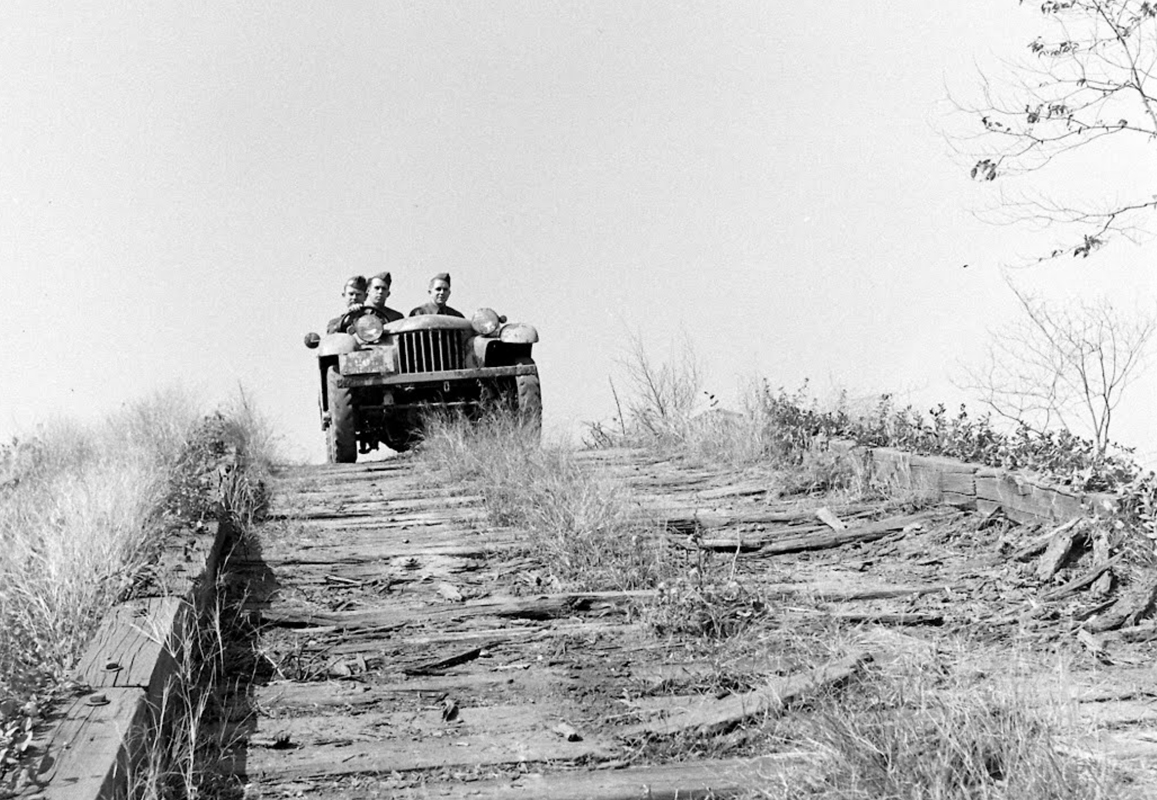
The Jeep was so successful in its wartime application that Pres. Dwight D Eisenhower called it “one of the three decisive weapons the US had during World War 2”. It was used in all theatres of the war. The Long Range Desert Group and British SAS wreaked havoc on Rommel’s supply lines. Highly mobile, and mounted with .30 and .50 Calibre Browning machine guns, they could hit and run with devastating efficiency. The Jeep was tough, offroad capable and reliable, with an operating range of almost 500 kilometres. They were so numerous that German troops were heard to remark that it seemed to them every Allied soldier got issued with a Jeep! This functionality lives on in the Jeep Wrangler that we know and love today.
Willys-Overland was acquired by Kaiser in 1953. Jeep had evolved over this time to be the first 4×4 SUV. In 1963 the Corporation changed its name to Kaiser-Jeep Corporation and was acquired by American Motors Corporation in 1970. The Jeep continued to evolve with CJ5’s including the option of longer wheelbase models with 6-cylinder engines. In 1987 Chrysler Corporation acquired AMC and a year later merged with Daimler-Benz. The Cherokee SUV range proved a huge success, whilst the Wrangler range epitomised the design brief of the original Jeeps and took offroad performance to new levels.

Today, Jeep is one of fourteen Global brands (Abarth, Alfa Romeo, Chrysler, Citroen, Dodge, DS, Fiat, Jeep, Lancia, Maserati, Opel, Peugeot, Ram Trucks and Vauxhall) marketed globally by Stellantis and its subsidiaries, making it the fourth largest motor holding company in the World. Jeep remains synonymous with unparalleled off-road ability and remains a firm favourite with enthusiasts seeking rugged, reliable vehicles offering superior off-road ability. A wonderful heritage for a vehicle that literally helped the Allies win the war.
